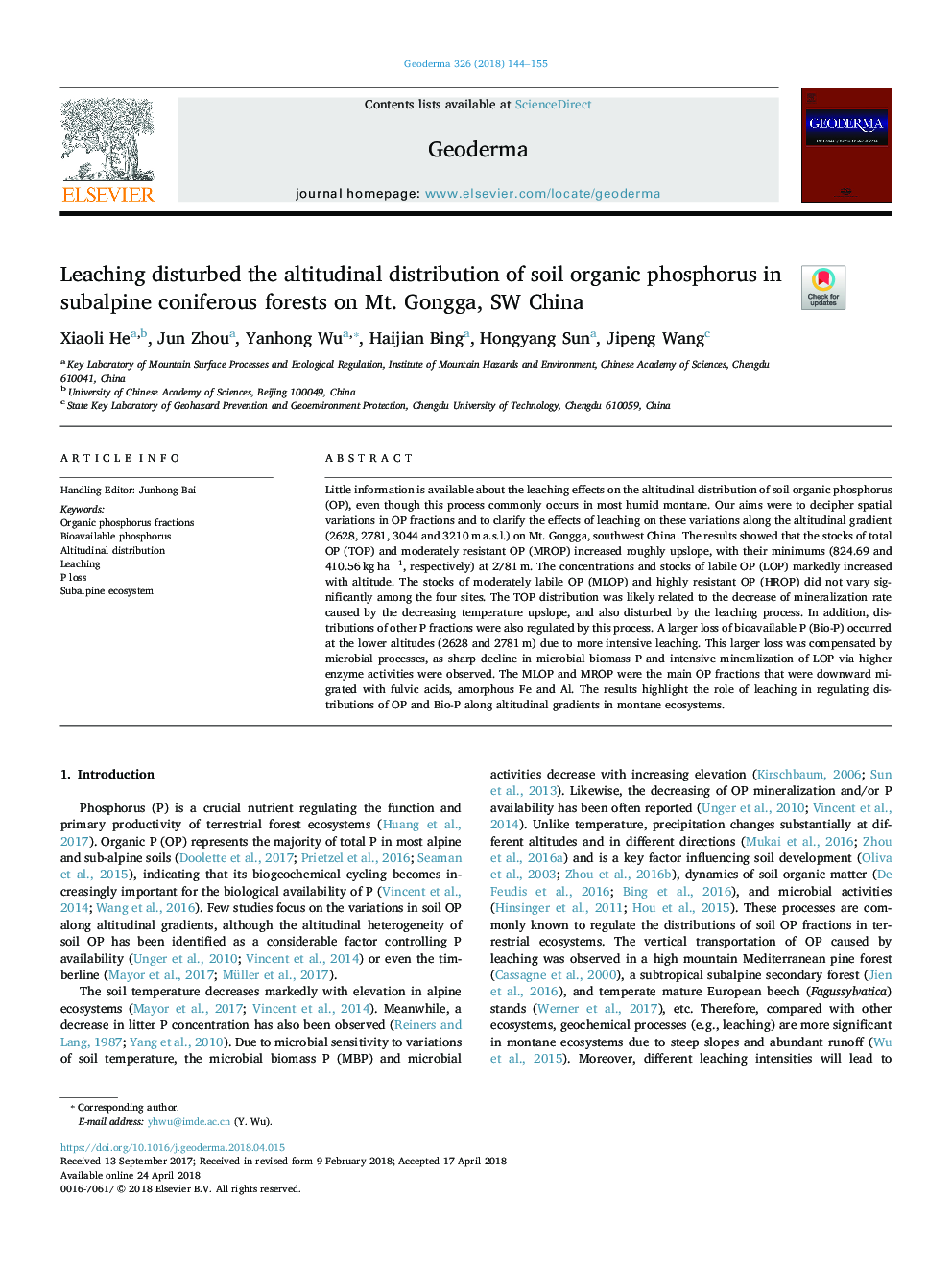| Article ID | Journal | Published Year | Pages | File Type |
|---|---|---|---|---|
| 8893991 | Geoderma | 2018 | 12 Pages |
Abstract
Little information is available about the leaching effects on the altitudinal distribution of soil organic phosphorus (OP), even though this process commonly occurs in most humid montane. Our aims were to decipher spatial variations in OP fractions and to clarify the effects of leaching on these variations along the altitudinal gradient (2628, 2781, 3044 and 3210â¯mâ¯a.s.l.) on Mt. Gongga, southwest China. The results showed that the stocks of total OP (TOP) and moderately resistant OP (MROP) increased roughly upslope, with their minimums (824.69 and 410.56â¯kgâ¯haâ1, respectively) at 2781â¯m. The concentrations and stocks of labile OP (LOP) markedly increased with altitude. The stocks of moderately labile OP (MLOP) and highly resistant OP (HROP) did not vary significantly among the four sites. The TOP distribution was likely related to the decrease of mineralization rate caused by the decreasing temperature upslope, and also disturbed by the leaching process. In addition, distributions of other P fractions were also regulated by this process. A larger loss of bioavailable P (Bio-P) occurred at the lower altitudes (2628 and 2781â¯m) due to more intensive leaching. This larger loss was compensated by microbial processes, as sharp decline in microbial biomass P and intensive mineralization of LOP via higher enzyme activities were observed. The MLOP and MROP were the main OP fractions that were downward migrated with fulvic acids, amorphous Fe and Al. The results highlight the role of leaching in regulating distributions of OP and Bio-P along altitudinal gradients in montane ecosystems.
Related Topics
Physical Sciences and Engineering
Earth and Planetary Sciences
Earth-Surface Processes
Authors
Xiaoli He, Jun Zhou, Yanhong Wu, Haijian Bing, Hongyang Sun, Jipeng Wang,
